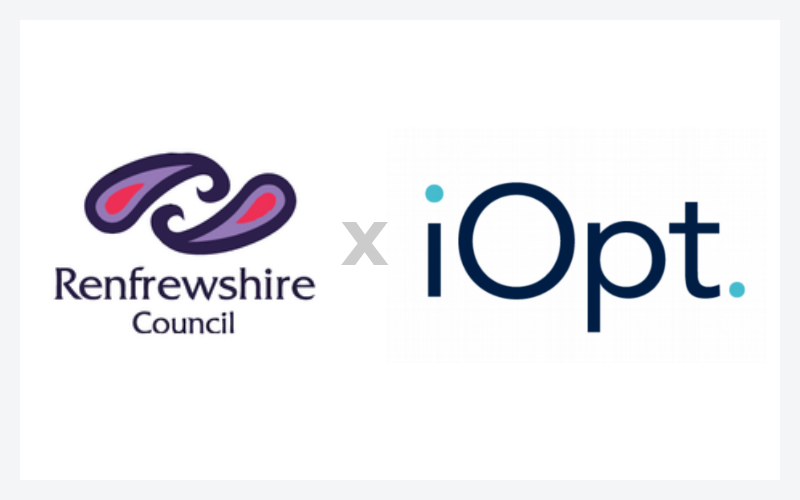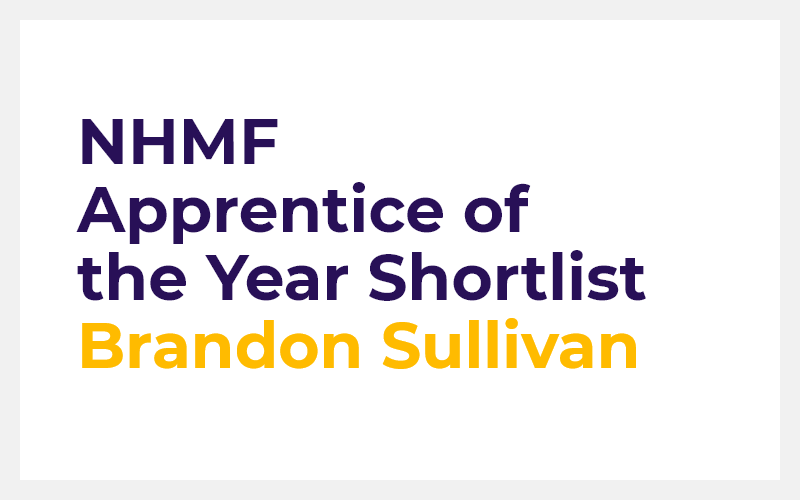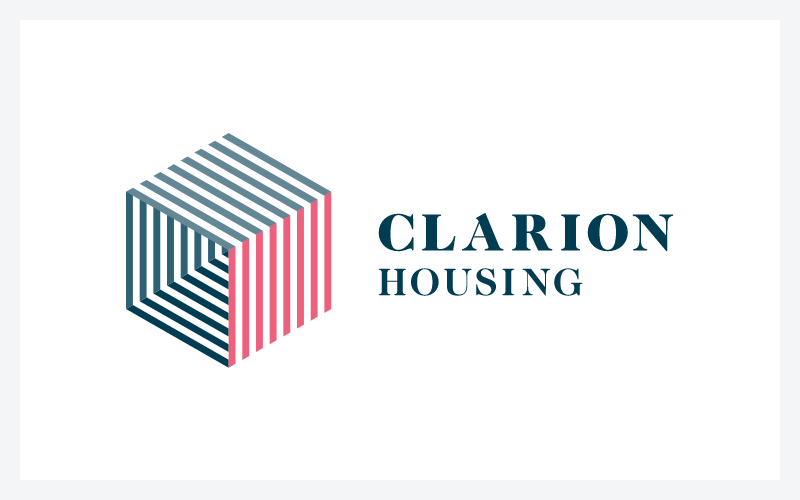NHMF Awards 2022 - Most Innovative Property Service Winner : iOpt and Renfrewshire Council: IoT enabled Smart Asset Management
Judges’ comments: -- Great concept with great potential and tangible outcomes and cost savings for client and customers. -- Strong business cases for rolling out further, with data and transferable to other organisations.

What is the project?
Renfrewshire Council in conjunction with iOpt worked together to prove that IoT can be used to employ a smart asset management approach to ROT management across their property stock. By measuring three basic factors from the internal environment of a property CO2, humidity and temperature, the Council has been able to identify where and when to intervene to support tenants in order to heat and ventilate their homes to a standard that mitigates any risk or damage to their property as a result of the internal environmental dynamics.
What is innovative about the service provided?
The Council decided to employ a smart asset management approach that allowed it to identify where and when to intervene with a view to supporting tenants in order to heat and ventilate their homes to a standard that would mitigate any risk or damage to their property as a result of the internal environmental dynamic. It embarked on a proof-of-concept pilot using iOpt's environmental sensors and associated data analysis services to develop an algorithm that would identify when an intervention was required. The algorithm developed, created triggers based on a set of assumptions, which took into consideration property size, construction type, occupancy levels, household circumstances and behaviour, as well as the external environment, location and seasonal changes. The algorithm was developed through the pilot using environmental room sensors.
What are the measurable benefits to the client, the contractor, the resident and the neighbourhood?
The pilot showed a number of benefits. Most significantly it allowed the asset team to cut down by some 70% on trips to visit tenants’ properties allowing more time to tackle problems and cut carbon emissions, vehicle use and cost. Maintenance teams now have evidence-based information that allows them to intervene in properties that would, in-time, lead to excessive maintenance costs. The tenant management teams can monitor occupancy to ensure their properties are being utilised as expected. Legal teams have evidence of misuse or abandonment. Energy teams have insight into tenants who may be struggling to pay their bills, which in turn impacts the quality of the property and of course quality of life.
Other benefits included:
- Net Zero; the solution provides key insights into the energy performance of individual homes. This allows housing managers to validate how well their interventions have performed to provide proof of energy efficiency improvements. By making data-driven decisions, the Council can focus attention on the most vulnerable properties, helping them use their budget both strategically and effectively. ‘Golden Thread’™ data, the data captured by iOpt™’s sensors provide a single source of truth, offering real-time transparency, accountability, and insight into the built environment from the Council’s dashboard.
- Proactive maintenance – during the trial a leak was detected in a property, before it was even reported by a tenant, the Council were able to plan works more cost effectively to prevent the leak from spreading into other rooms and properties rather than reacting to a call from the tenant. iOpt™’s platform can identify hidden disrepair, where problems slowly build inside the fabric of a building only to surface in one large wave at its worst. Housing providers who are paying careful attention to their stock can eliminate problems as they arise and ensure that residents are always protected from poor living conditions that can easily affect their health.
- Communicate and Educate - when iOpt™’s dashboard identifies a ventilation issue, a notification can be sent directly to the tenant via the Tenant APP to tell them to open some windows and educate them on the reasons why it is important to have good ventilation for their health. This means the content the tenant receives is relevant to a particular point-in-time and a result of the environment in which they are living. To aid in further diagnosis of a problem, the tenant can be asked to take photographs of a specific room or asset and send to the property manager to help speed up the assessment of a problem. The tenant can then track the progress of an issue. This is empowering tenants in a very positive way, through technology.
What are the financial costs and measurable cashable benefits over a defined time period?
After six months iOpt and Renfrewshire Council carried out a joint ROI investigation. The results showed 500% return-on-investment (extrapolated over 2 years and with further gains expected). Specific savings of £192 per property/annum were realised through:
- Proactive intervention in issues such as mould growth;
- Improved social benefits such as detection of likely fuel poverty cases (improving health, social wellbeing and protecting the building);
- Reduced property visits through the ability to diagnose issues remotely;
- Reduction in lost revenue due to early identification of abandoned properties;
- Ability to restructure capex spend through evidence based strategic planning.
The data captured by the sensors and how the software interrogates that data and presents it via iOpt’s dashboard is ground-breaking within the sector. The areas in which this service has an impact include:
- Energy efficiency retrofit analysis (enabling the NetZero agenda);
- Preventive maintenance (reduced cost);
- Team efficiencies (increased productivity);
- Tenant engagement (improved social aspects);
- Reduction in carbon emissions.
The solution enables the Council to predict the cost of not carrying out repairs, informed by the real-time environmental data that gives a ‘time to failure’ estimate. Knowing this, iOpt’s solution can now use historical data to estimate a cost to rectify the subsequent damage if early intervention is not made. This allows the Council to prioritise the work they should carry out based on both qualitative and quantitative data.
How relevant is this as an example that might be followed by other organisations?
Renfrewshire Council, commented: iOpt Assets™ easy to install technology allows social housing providers to spot problems such as leaks, abandonments and conditions that will promote damp and mould growth, as well as tenant welfare issues such as fuel poverty. It will also help take preventive action, where necessary, to protect, manage, or even improve homes from damp and moisture detection, to issues with air quality. iOpt provides a platform to assist asset managers in protecting their properties and their tenants from environmental conditions that will negatively affect asset and stock conditions and tenants’ health. Those conditions may occur naturally, due to fabric failure or due to the tenant’s actions. iOpt’s solution tackles the fundamental problems seen by asset managers and tenants in social housing, which are damp and mould growth, followed by excess cold. The problems are predominantly due to high levels of moisture (damp, humidity, condensation), a lack of heating and a lack of regular ventilation. iOpt’s sensors measure the environment and energy usage within a property. The data generated is used to produce reports and alerts that subsequently lead to actions being taken directly to mitigate problems, or preventive strategies are formed to stop these types of problems from occurring. Temperature and humidity provide a very good understanding of how a property is being heated and the likelihood of mould growth. CO2 informs on occupancy levels (in individual rooms), air quality (how healthy it is for human habitation) and how the levels of ventilation change (air changes). The analytics and algorithms have been developed from five years’ monitoring of 1,000 social housing properties. The technology and the method of its application are proven and now ready for roll-out to much larger projects. Through pilot studies, initiated in the first instance at Renfrewshire Council, iOpt has now developed a set of algorithms and a platform that bring the data to life and will allow asset managers to get a far better understanding of what is happening both across their stock and in individual properties. Dane Ralston, Director at iOpt Assets, said: “The results of the pilot have proven the business case for this service for all social housing providers. It is delivering significant returns by allowing providers to predict issues and be proactive with maintenance, which is invariably more cost effective than having to deal with them after the fact. It also reduces the need for regular property visits and administration, while also leading to reduced premiums in large property portfolios.”
Background
Renfrewshire Council has over 12,000 properties within its portfolio and manage both their planned and reactive maintenance work. A large proportion of their stock is ageing. In 2019 a stock review was undertaken and it identified an inherent issue with ROT. The Council identified that significant improvements could be made to how the Council approached monitoring properties and wanted to foster a preventative approach to tackling the issue rather than a reactive one. The Council identified that the issues relating to ROT were primarily connected to temperature and humidity levels that would, over time, promote and accelerate mould growth and other ROT issues within a property that would cause damage requiring intervention and repair works.
Therefore, the Council decided to employ a smart asset management approach to allow it to identify where and when to intervene with a view to supporting tenants in order to heat and ventilate their homes to a standard that would mitigate any risk, or damage to their property as a result of the internal environmental dynamic. It embarked upon a proof-of-concept pilot using iOpt's environmental sensors and associated data analysis services to develop an algorithm that would identify when an intervention is required. The algorithm developed created triggers based on a set of assumptions, which took into consideration property size and construction type, occupancy levels, household circumstances and behaviour, external environment, location and seasonal changes. The development of the algorithm using environmental room sensors was uniquely created through the pilot.
Check out all of our NHMF Awards 2022 winners here.


